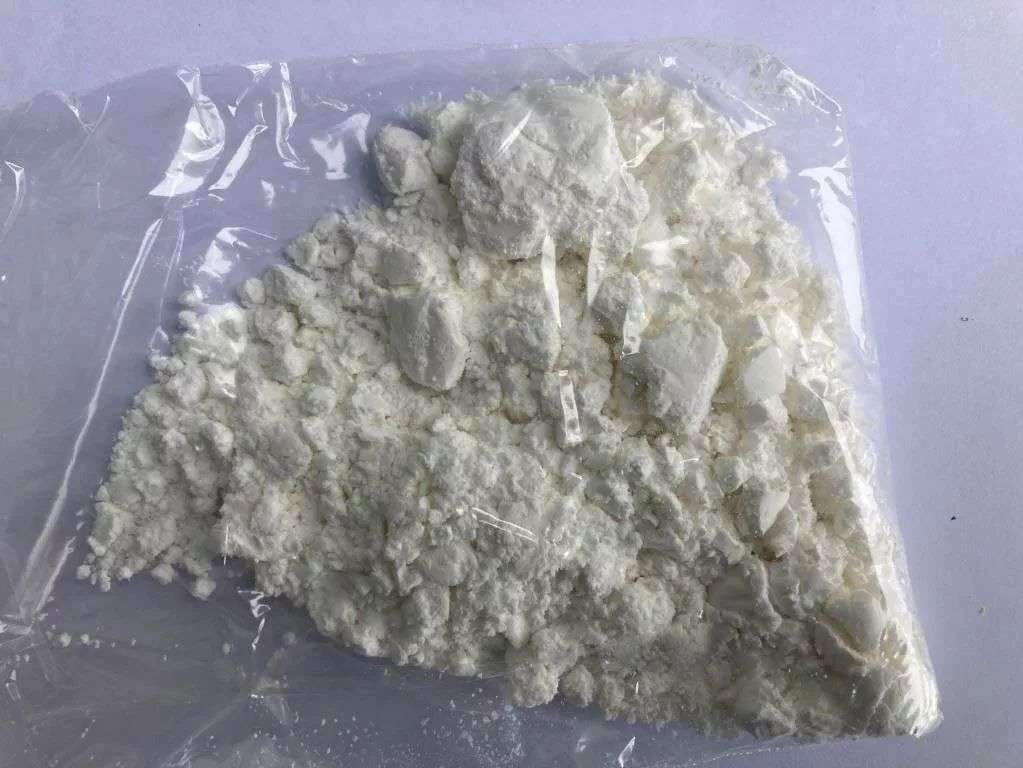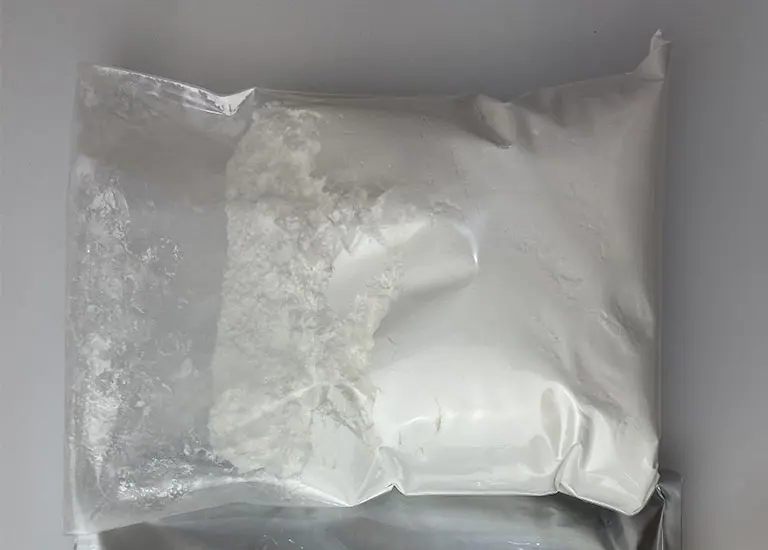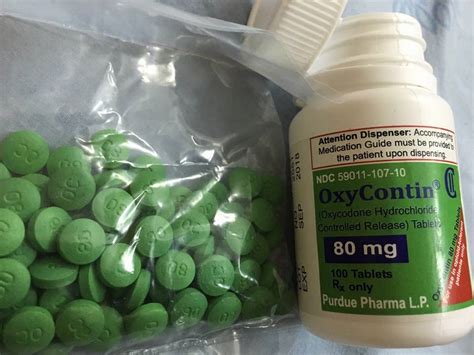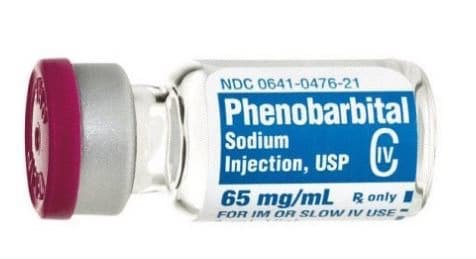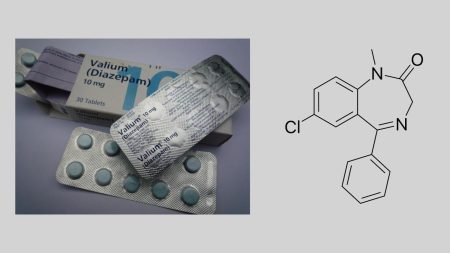
Valium (Diazepam, Diazepam, Seduxen, Relanium, Sibazone) is a light tranquilizer, the recommended dose of which is 5-10 mg. 2-3 times a day. It is sold in white capsules of 2 mg. and in yellow tablets of 5 mg.
Valium has a sedative-hypnotic, anticonvulsant and central muscle relaxant effect. The mechanism of action of diazepam is due to the stimulation of benzodiazepine receptors of the supramolecular GABA-benzodiazepine-chlorionophore receptor complex, leading to an increase in the inhibitory effect of GABA (mediator of pre- and postsynaptic inhibition in all parts of the central nervous system) on the transmission of nerve impulses.
Stimulates benzodiazepine receptors located in the allosteric center of postsynaptic GABA receptors of the ascending activating reticular formation of the brain stem and the insertion neurons of the lateral horns of the spinal cord; reduces the excitability of subcortical structures of the brain (limbic system, thalamus, hypothalamus), inhibits polysynaptic spinal reflexes. The anxiolytic effect is due to the influence on the amygdala complex of the limbic system and manifests itself in a decrease in emotional tension, a weakening of anxiety, fear, anxiety. The sedative effect is due to the effect on the reticular formation of the brain stem and the nonspecific nuclei of the thalamus and is manifested by a decrease in symptoms of neurotic origin (anxiety, fear).
The main mechanism of hypnotic action is the inhibition of the cells of the reticular formation of the brain stem. The anticonvulsant effect is realized by enhancing presynaptic inhibition. The spread of epileptogenic activity is suppressed, but the excited state of the focus is not removed. The central muscle relaxant effect is due to the inhibition of the polysynaptic spinal afferent inhibitory pathways (to a lesser extent and monosynaptic). Direct inhibition of motor nerves and muscle function is also possible. Having moderate sympatholytic activity, it can cause a decrease in blood pressure and dilation of coronary vessels. Increases the threshold of pain sensitivity. Suppresses sympathoadrenal and parasympathetic (including vestibular) paroxysms. Reduces nocturnal secretion of gastric juice. The effect of the drug is observed by 2-7 days of treatment. The productive symptoms of psychotic genesis (acute delusional, hallucinatory, affective disorders) are practically not affected, there is rarely a decrease in affective tension, delusional disorders. With withdrawal syndrome in chronic alcoholism, it causes a weakening of agitation, tremor, negativism, as well as alcoholic delirium and hallucinations. The therapeutic effect in patients with cardialgia, arrhythmias and paresthesia is observed by the end of 1 week.
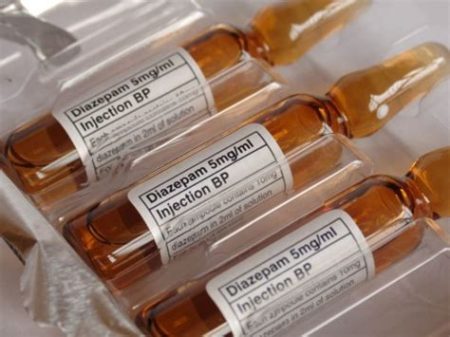
Indications:
Anxiety disorders. Dysphoria (as part of combination therapy as an additional drug). Insomnia (difficulty falling asleep). Skeletal muscle spasm with local trauma; spastic conditions associated with damage to the brain or spinal cord (cerebral palsy, athetosis, tetanus); myositis, bursitis, arthritis, rheumatic pelvispondyloarthritis, progressive chronic polyarthritis; arthrosis accompanied by tension of skeletal muscles; vertebral syndrome, angina pectoris, tension headache. Abstinent alcohol syndrome: anxiety, tension, agitation, tremor, transient reactive states. As part of complex therapy: arterial hypertension, gastric ulcer and duodenal ulcer; psychosomatic disorders in obstetrics and gynecology: menopausal and menstrual disorders, gestosis; epileptic status; eczema and other diseases accompanied by itching, irritability. Meniere’s disease. Poisoning of drugs. Premedication before surgical interventions and endoscopic manipulations, general anesthesia. For parenteral administration: premedication before general anesthesia; as a component of combined general anesthesia; myocardial infarction (as part of complex therapy); motor arousal of various etiologies in neurology and psychiatry; paranoid hallucinatory states; epileptic seizures (relief); relief of labor; premature birth (only at the end of the third trimester of pregnancy); premature detachment of the placenta.
Contraindications:
Hypersensitivity, coma, shock, acute alcohol intoxication with weakening of vital functions, acute intoxication of drugs that have a depressing effect on the central nervous system (including narcotic analgesics and hypnotic drugs), myasthenia gravis, angle-closure glaucoma (acute attack or predisposition); severe COPD (risk of progression of the degree of respiratory failure), acute respiratory failure, abscess or Lennox-Gastaut syndrome (with intravenous administration contributes to the emergence of tonic epileptic status), pregnancy (especially the first trimester), lactation, children up to 6 months (when ingested), up to 30 days inclusive (with in / m and in / in the introduction).With caution. Epilepsy or epileptic seizures in the anamnesis (initiation of treatment with diazepam or its abrupt withdrawal may accelerate the development of seizures or epileptic status), hepatic and/or renal insufficiency, cerebral and spinal ataxia, hyperkinesis, drug dependence in the anamnesis, propensity to abuse psychoactive drugs, organic brain diseases, hypoproteinemia, night apnea (established or presumed), old age.
Side effects:
From the nervous system: at the beginning of treatment (especially in elderly patients) – drowsiness, dizziness, fatigue, decreased ability to concentrate, ataxia, disorientation, gait instability and poor coordination of movements, lethargy, dulling of emotions, slowing of mental and motor reactions, anterograde amnesia (develops more often than when taking other benzodiazepines); rarely – headache, euphoria, depression, tremor, mood depression, catalepsy, confusion, dystonic extrapyramidal reactions (uncontrolled body movements, including eyes), weakness, myasthenia gravis during the day, hyporeflexia, dysarthria; extremely rarely – paradoxical reactions (aggressive outbursts, psychomotor agitation, fear, suicidal tendencies, muscular spasm, confusion, hallucinations, acute arousal, irritability, anxiety, insomnia).
From the hematopoietic organs: leukopenia, neutropenia, agranulocytosis (chills, hyperthermia, sore throat, excessive fatigue or weakness), anemia, thrombocytopenia.
From the digestive system: dry mouth or hypersalivation, heartburn, hiccups, gastralgia, nausea, vomiting, decreased appetite, constipation; liver dysfunction, increased activity of “hepatic” transaminases and alkaline phosphatase, jaundice.
From the side of the CCC: palpitations, tachycardia, decreased blood pressure (with parenteral administration).
From the genitourinary system: urinary incontinence, urinary retention, impaired kidney function, increased or decreased libido, dysmenorrhea.
Allergic reactions: skin rash, itching. Effect on the fetus: teratogenicity (especially the first trimester), central nervous system depression, respiratory disorders and suppression of the sucking reflex in newborns whose mothers used the drug.
Local reactions: at the injection site – phlebitis or venous thrombosis (redness, swelling or pain at the injection site).
Other: addiction, drug dependence; rarely – respiratory depression, impaired respiratory function, visual impairment (diplopia), bulimia, weight loss. With a sharp reduction in the dose or discontinuation of administration – “withdrawal” syndrome (irritability, headache, anxiety, agitation, excitement, fear, nervousness, sleep disorders, dysphoria, spasm of smooth muscles of internal organs and skeletal muscles, depersonalization, increased sweating, depression, nausea, vomiting, tremor, perception disorders, in T.ch. hyperacusis, paresthesia, photophobia, tachycardia, convulsions, hallucinations, rarely acute psychosis). When used in obstetrics – in full-term and premature infants – muscle hypotension, hypothermia, dyspnea.
Overdose.
Symptoms: drowsiness, confusion, paradoxical excitement, decreased reflexes, areflexia, deafness, decreased reaction to pain irritations, deep sleep, dysarthria, ataxia, visual impairment (nystagmus), tremor, bradycardia, shortness of breath or difficulty breathing, apnea, pronounced weakness, decreased blood pressure, collapse, depression of cardiac and respiratory activity, coma.
Treatment: gastric lavage, forced diuresis, taking activated charcoal. Symptomatic therapy (maintenance of respiration and blood pressure), ventilator. Flumazenil is used as a specific antagonist (in a hospital setting). Hemodialysis is ineffective. The benzodiazepine antagonist flumazenil is not indicated for patients with epilepsy who have been treated with benzodiazepines. In such patients, the antagonistic effect in relation to benzodiazepines can provoke the development of epileptic seizures.


